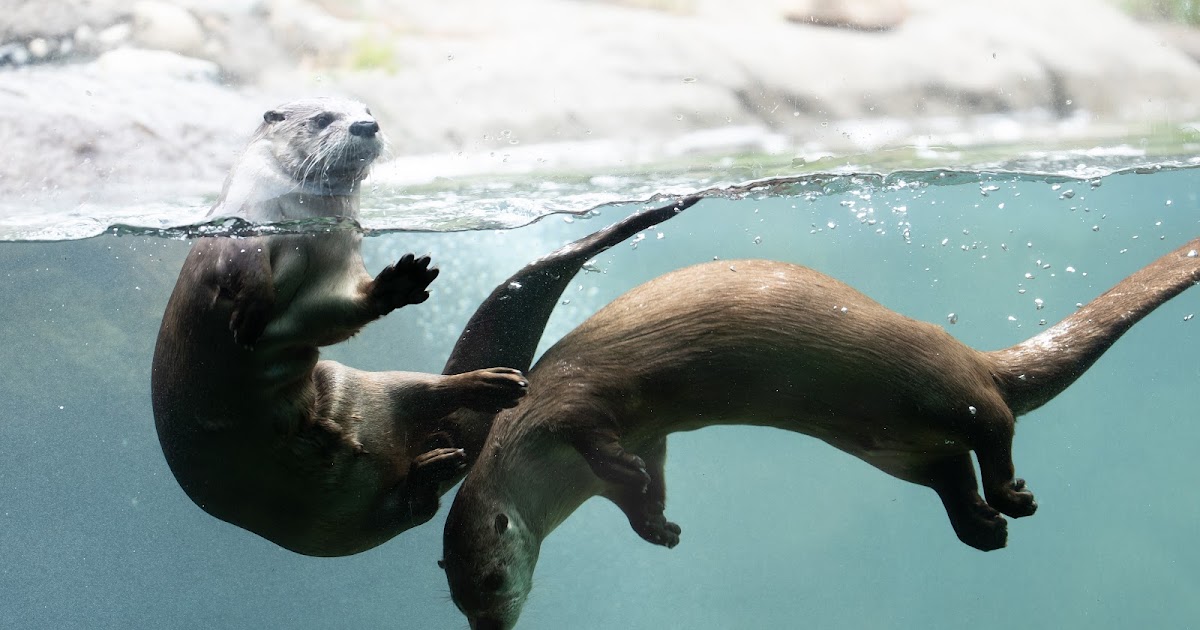Summary of Valkyrie gives birth to a pair of river otter pups:
The Woodland Park Zoo recently celebrated the birth of two North American river otter pups on March 29, marking the second litter for their 9-year-old parents, Valkyrie and Ziggy, with the previous birth occurring in 2019. The female and male newborns weighed about 10 ounces each at the time of their neonatal check-up. The pups, who are currently in an off-view, climate-controlled den with their mother for bonding and nursing, were born blind and will rely heavily on their mother during their first year. They are expected to begin opening their eyes around a month old.
Valkyrie has previously demonstrated excellent maternal skills with her first litter in 2019, successfully raising all four pups to their first year, and is showing those same capabilities with her new litter. The animal care staff are monitoring the new family closely via a den cam, and the father, Ziggy, is separated from the family but visible in the Living Northwest Trail habitat.
Before the pups can be introduced to the outdoor habitat, they must learn to swim, a skill taught by their mother, Valkyrie, using a kiddie pool in the den. Their development and swimming lessons are expected to be a delightful attraction for zoo visitors over the summer. The birth of these otters is part of a breeding recommendation through the Association of Zoos & Aquariums’ Otter Species Survival Plan, aimed at ensuring a healthy population of river otters.
The post also shares some interesting facts about North American river otters, including their semi-aquatic nature, playful learning behavior that helps establish social bonds, practice hunting techniques, and varied diet. It mentions their habitat range, their role at the top of the food chain as an indicator of local ecosystem health, and the species’ current non-endangered status.
Finally, the post encourages people to support otters and other wildlife in two ways: by becoming a Carnivore Spotter to report sightings of local carnivores, including river otters, within the greater Seattle area and by adopting an animal through the ZooParent program to help provide care for the zoo’s animals and support conservation efforts.
– Celebrating the arrival of river otter pups at Woodland Park Zoo
– Highlighting the importance of wildlife conservation programs in zoos
– Understanding the biology and ecology of North American river otters
– Exploring the role of zoo-based breeding programs in species preservation
– Offering ways the public can contribute to the well-being of river otters and their habitats
In a delightful development for animal enthusiasts and conservationists alike, Woodland Park Zoo has announced the birth of two North American river otter pups. This momentous event marks a significant achievement for the zoo and its continued efforts in wildlife conservation. The birth of these otter pups adds to the zoo’s diverse species and plays a crucial role in the broader conservation efforts for this particular species. As we delve into the details of this event, the significance of zoo-based breeding programs, and the fascinating biology of the North American river otter, it becomes clear why such news is worth celebrating.
The North American river otter, a semi-aquatic member of the weasel family, is known for its playful behavior and remarkable adaptability to aquatic and terrestrial environments. Their diet primarily consists of fish, crayfish, amphibians, and sometimes small mammals and birds. Despite facing threats from habitat loss, water pollution, and overfishing, the species is currently not listed as endangered, thanks in part to ongoing conservation efforts. This resilience, however, should not deter from the importance of proactive measures to safeguard their populations.
At the heart of such measures are breeding programs coordinated by organizations like the Association of Zoos & Aquariums’ Otter Species Survival Plan. These programs are essential for maintaining genetically healthy species populations in human care, serving as a backup to wild populations that may face unforeseen threats. The successful birth of the river otter pups at Woodland Park Zoo highlights the zoo’s commitment to these efforts. The pups were born as part of a deliberate, science-driven breeding recommendation, ensuring their contribution to the genetic diversity and overall health of river otters in AZA-accredited institutions.
As for the otter pups, the first weeks of life are critical. They are born blind and completely dependent on their mother for survival. This dependency period, which involves nursing and initial socialization, takes place in the safety of a climate-controlled den, away from the public eye. Such careful management of the early stages of their lives is crucial for their development. Interestingly, despite being adept swimmers as adults, river otter pups must be taught how to swim—a task that falls to their attentive mother, Valkyrie. This aspect of otter behavior underscores the deep care and education that zoo staff provide, ensuring the pups survive and thrive.
Public support and engagement play vital roles in the success of wildlife conservation efforts. One way individuals can contribute is by becoming a ZooParent, which directly supports the care of zoo animals, including the newly born otter pups, and supports conservation work. Additionally, reporting sightings of river otters and other carnivores in the wild through programs like the zoo’s Carnivore Spotter initiative adds valuable data that can inform conservation strategies.
The birth of the river otter pups at Woodland Park Zoo is a beacon of hope for conservationists. It highlights zoos’ crucial role in preserving species and provides an invaluable educational opportunity for the public. By supporting the zoo and participating in community science projects, individuals can contribute to the ongoing story of conservation success and preserving our planet’s incredible biodiversity. Through sustained efforts and public engagement, the future for species like the North American river otter looks ottersome.


